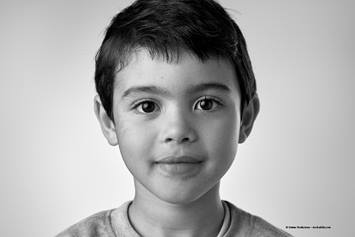Achalasia in Children
Achalasia affects the muscles in the esophagus, which is the tube that carries foods and liquids from the mouth to the stomach. Achalasia makes it hard to swallow food and liquid.
What Is Achalasia?
Achalasia is a rare disorder that makes it hard to swallow foods and liquids. This happens when there are problems with the esophagus, which is the tube that carries food from the mouth to the stomach.
- The first problem is that the muscles in the esophagus are not constricting like they should. When this happens, your body has a hard time pushing food into your stomach. Over time, these muscles can become weak.
- Another problem is that the lower esophageal sphincter (LES) isn’t working like it should. The LES is the muscle at the bottom of the esophagus that opens into the stomach. The LES is narrow and tight, which keeps food from going into the stomach. Over time, foods and liquids can stay in the esophagus.
Achalasia can occur at any age, but it’s more common in adults. In some cases, there may be a family history of achalasia or other conditions associated with achalasia.
What Are the Signs and Symptoms of Achalasia in Children?
In most cases, symptoms may start slowly but get worse over time. Symptoms of achalasia may look like those of other disorders, so it’s important that your child is seen by a health care provider for a diagnosis. Common achalasia symptoms are:
- Throwing up (vomiting) food that the body hasn’t broken down yet (undigested)
- Acid reflux
- Regurgitation – swallowed food or liquid comes back up into the mouth
- Trouble swallowing
- Weight loss
- Not gaining weight
- Chest pain
- Coughing a lot when lying down
- Bad breath
What Causes Achalasia in Children?
Achalasia happens when there are problems with the nerve cells in the muscles of the esophagus. The exact cause of these problems is unknown. Achalasia in children is often linked with other conditions, like adrenal glucocorticoid deficiency, Allgrove syndrome and Down syndrome. Certain infections can also cause achalasia.
How Is Achalasia in Children Diagnosed?
Your child may have achalasia if their symptoms have lasted for at least a few weeks and are getting worse. To diagnose achalasia, your child’s health care provider will examine the esophagus and order special tests to take pictures and measure pressures inside the esophagus while they’re swallowing. These tests include:
- Chest X-ray: Can show widening and fluid in the esophagus.
- Esophagram: A type of X-ray that takes pictures while your child swallows a special liquid called contrast.
- Endoscopy: A flexible tube (endoscope) is passed into the esophagus. The endoscope has a light and camera that lets the provider look at the esophagus and take tissue samples if needed.
- Functional Luminal Imaging Probe (FLIP): During endoscopy, your child’s health care provider may place a special catheter in the esophagus. This is a balloon measuring device that can measure the size of the esophagus and how stretchy it is.
- Manometry: Pressure is measured inside the esophagus and LES while your child swallows sips of water and small bites of food. This test is very important for diagnosing achalasia and its different types.
How Is Achalasia in Children Treated?
Without treatment, achalasia gets worse over time. Unfortunately, medicine usually does not work as a treatment. Interventions of the esophagus are often recommended. Types of interventions include:
- Balloon dilation: A special type of balloon is passed through an endoscope into the esophagus. The balloon is inflated so it can stretch the tight LES muscles.
- Laparoscopic Heller myotomy: A surgeon makes several small cuts (incisions) into the belly (abdomen) for surgery. The surgeon uses special tools to cut the LES muscles in the tight area at the end of the esophagus. This lets food go to the stomach. In most cases, this surgery helps the symptoms get better. This treatment works long-term for children.
- Per Oral Esophageal Myotomy (POEM): Using endoscopy, the doctor performs the myotomy (cutting the LES muscles) in the tight area of the esophagus to allow food to pass through to the stomach. This approach allows the myotomy to be customized to the type of achalasia. This is done without incisions into the abdomen and is very effective long-term for patients. Recovery is generally faster with fewer complications than surgery. This is a newer procedure that is quickly becoming the standard of care. Nationwide Children’s Hospital is one of only a few children’s hospitals in the world offering this procedure.
What Are the Complications of Achalasia in Children?
If achalasia isn’t treated, it will not get better. Your child will keep losing weight and may start aspirating. This means food or liquid goes into the airway or lungs. This can cause pneumonia and other breathing problems. Adults with untreated achalasia are at greater risk for esophageal cancer.
When Should My Child See a Doctor?
Call your child’s health care provider if they have a hard time swallowing or other symptoms of achalasia. This is very important if your child has had symptoms for a few weeks and they’re getting worse. Achalasia is rare in children. But once they are diagnosed, interventions can help.
Nationwide Children’s offers Peroral Endoscopic Myotomy (POEM), which can effectively treat the symptoms of swallowing disorders like achalasia.



